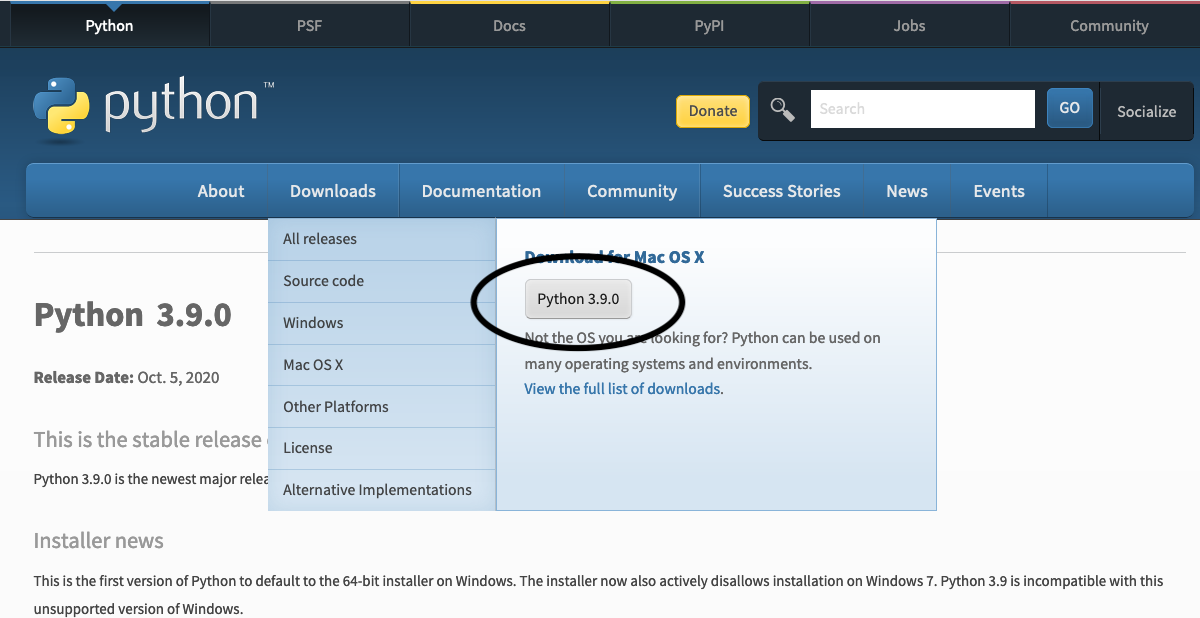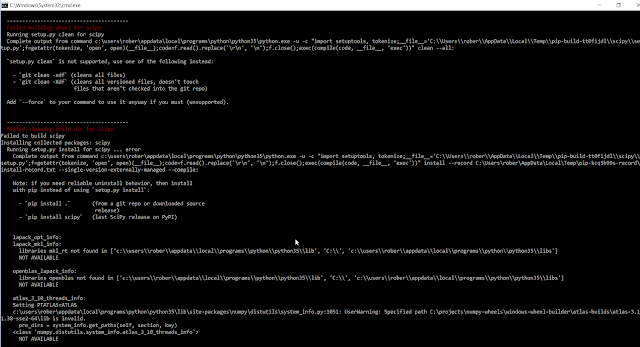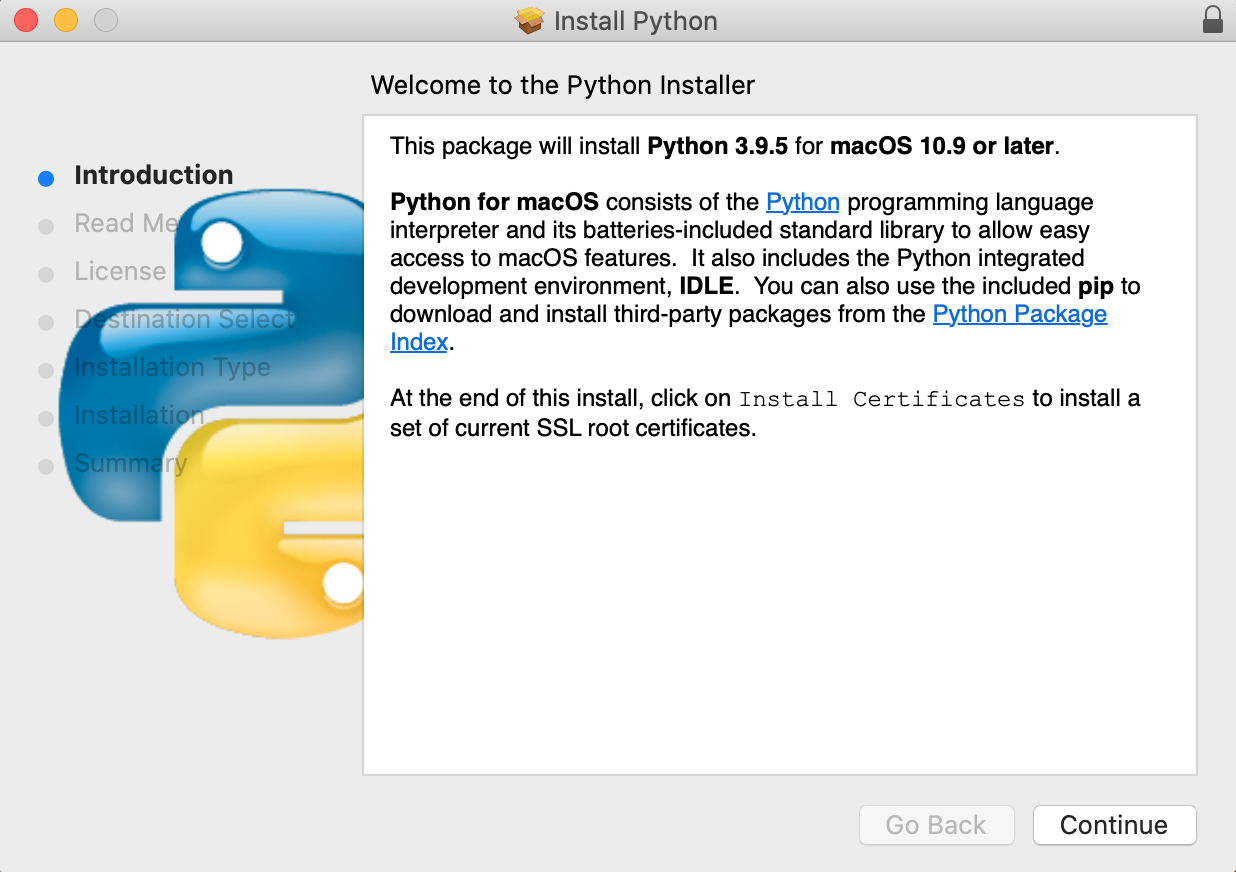
- #Python install matplotlib on mac mac os x#
- #Python install matplotlib on mac mac osx#
- #Python install matplotlib on mac install#
- #Python install matplotlib on mac upgrade#
- #Python install matplotlib on mac software#
#Python install matplotlib on mac install#
Once you get to know Python, though, you will undoubtedly want to install some other packages and when that time comes I suggest you use pip. Until recently the CIY was the only way to get everything working on Lion but now the developers of NumPy, SciPy, and matplotlib have all caught up and it’s possible to just download and double-click on a few DMG files to get a basic scientific Python installation working.

But it’s more hassle than everyone wants and there’s now an easier way using double-click installers.

#Python install matplotlib on mac upgrade#
With Homebrew and pip I can uninstall and upgrade different things at will, or choose to install bleeding-edge versions. I personally use the CIY method because it allows me to very easily control what’s installed. What I’ll describe below I’ll call the “double click” method. That’s what I’ll call the compile-it-yourself (CIY) method. bash_profile and dealing with compiler problems. I’ve already written a post about installing Python, NumPy, SciPy, and matplotlib on Lion, but it involves a lot of working at the command line, modifying your. See the “Install Python” page for the most up-to-date instructions. Update: These instructions are over a year old, though they may still work for you.

Here are the commands to download, unpack, and install Python from source: curl -OL This is really only ever preferred when you want to really customize the binary by setting certain options/flags during the build process. Most people don't do this since the binaries are alreay built for them. The last, and most uncommon, method is to install Python from its source code. Once you've opened the installer, follow the instructions and Python will be installed for you.
#Python install matplotlib on mac mac os x#
In my case I'd be downloading Mac OS X 64-bit/32-bit installer. Just make sure you download the installer that matches your CPU architecture type (32 or 64-bit). I'd recommend using the installer since it'll handle everything for you. Once you've clicked on the version you want, you should see a list of downloads for different operating systems and package types (like source code tarballs, installers, etc). The latest version 2 and 3 links are at the top. To install, just click the link above, then click on the version you want. If you want to upgrade to the latest 2.7.x version or upgrade to Python 3, you can get a binary directly from the Python website. This will show you a list of Python-related packages that can be installed. To see all the versions available, search Homebrew with this: $ brew search python If you'd rather have Python 3, just replace python with python3. To install Python 2.7.x, just type: $ brew install python You can install a few different versions of Python, including 2.7.x and 3.5.x. Now that you know what Homebrew is and have it installed, we can get on to installing Python. To install Homebrew, just follow the instructions on their website (which I linked to at the beginning of this section). For example, here are just a few things I've installed with it: android-sdk, go, mongodb, sqlite, git, imagemagick, lua, python3. It makes it much easier to install all the various tools you might need. Homebrew lets you install, update, and uninstall packages from the command line, just like apt-get does for Ubuntu. According to their website, Homebrew is "the missing package manager for OS X". Install Python with Homebrewįirst of all, if you don't know what Homebrew is and you use Mac OSX, you should.
#Python install matplotlib on mac mac osx#
Now, keep in mind that Mac OSX (10.8) already comes with Python 2.7 pre-installed, so these instructions will only really be helpful if you need to upgrade versions or need a better way to manage installations (like with Homebrew).

Instructions for installing Python 2 and 3 are different in most cases (but not by much), so make sure you're paying attention to which version you need installed. These are the most commons you'll encounter, and each method has its own purpose, all of which I'll detail in the sections below. I figured it would be helpful to detail a few of the easiest ways to install Python, including the following:
#Python install matplotlib on mac software#
As with just about any open source software package, there are quite a few ways to install Python on Mac OSX.


 0 kommentar(er)
0 kommentar(er)
